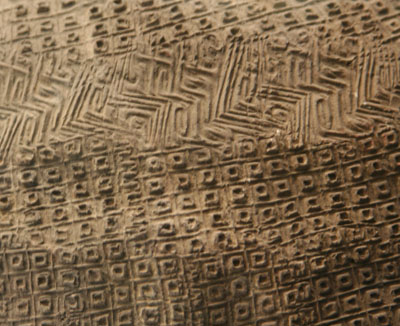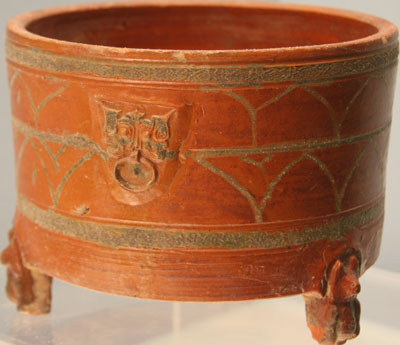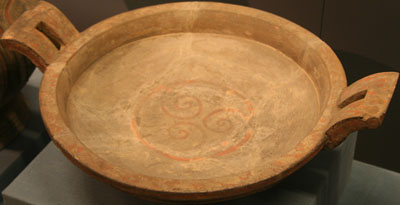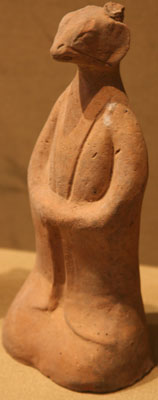Decorative Designs in Chinese Art 中国文物的纹饰
Pottery 陶器 Later Period 晚期
Click on any word to see more details.
Later Period 晚期
After the Neolithic pottery continued to be used for food and water vessels and also for additional uses, such as holding flowers, etc. Terracotta 赤陶 is an unglazed ceramic that usually refers to a wider range of artifacts, such as roof tiles and decorative figures, than pottery vessels for food and water.

White pottery, such as the zun shown above, was widespread in the Shang Dynasty and the Western Zhou. The earliest piece of white pottery dates to circa 5,000 BCE. The white pottery that appeared in the Shang was created from Kaolin clay, which was different to other clay types used for painted pottery and black pottery but very close in composition to the clay used for porcelain. White pottery was a transition to porcelain.

Another style of decorations widespread in the Shang and Zhou dynasties was impressions 印纹, such as those used on the pottery artifact above. The late Shang was a time of rapid development of white pottery.

The stamped patterns were replaced by polished surfaces, such as the artifacts above and below.

The rat is one of the twelve animals of the Terrestrial Branches 生肖, sometimes loosely referred to as the Chinese Zodiac. The rat is a symbol of industry and prosperity based on the animals ability to locate and store supplies of food. The picture below shows a rat figurine from a collection of the twelve animals.

Zisha 紫砂 is a style of pottery that uses a purple color clay, traditionally from the city of Yixing in Jiangsu. Zisha has been popularly used for tea pots since the late Tang. This is appropriate because Yixing is also an important tea growing center. The clays used have iron contents up to 9 percent, which is the origin of the reddish-brown to purple color. The items are fired in temperatures up to about 1,200 degrees Celcius, resulting in great hardness and density. The picture below shows a zisha brush rest with a cicada.
Chinese
Pinyin English
